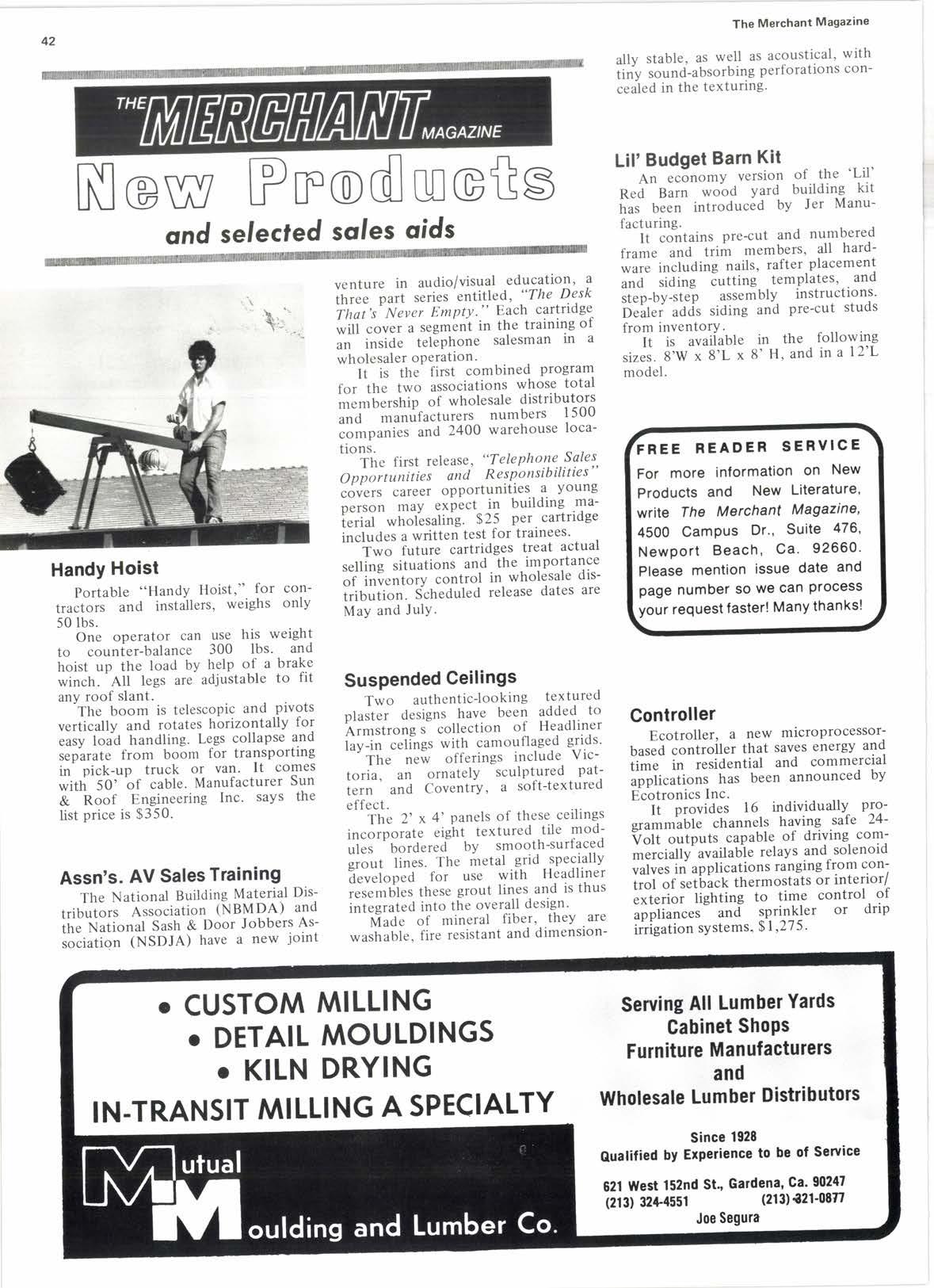
2 minute read
Hickory's looking good
I -| ICKORY is a versatile wood fl witfr many sterling qualities. It is harder than white oak, bends better than white ash, is stiffer than American elm, and has nearly twice the shock resistance of either of these three species. Its nail and screw hold' ing ability is seldom exceeded by other woods, according to a Tennessee Valley Authority report.
Hickory trees grow only in North America. And, in North America, hickory grows best in the Tennessee Valley and surrounding regions.
The Valley contains an abundant, well-distributed supply of hickory and has room for new hickory-using industries and expansion of existing plants.
Despite competition from other wood substitute materials, hickory's future looks promising. Once it was used in great quantities for textile loom parts, pitman rods, wagon wheel rims, axles and spokes, baseball bats, golf club shafts, plowhandles, dowels, chair rungs, billiard cues, and ski blanks. In addition, numerous striking tool handles, such as axe, adz, pick, mattock, maul, sledge, hammer, and hatchet-all were made from hickory. Also, hickory was sawed into lumber and timbers like other woods.
Many of these uses have declined in their importance. Steel rims and wheels have replaced the wooden wheel and spokes. Steel axles replaced wooden axles, metals and plastics replaced the golf club shafts; and many home and industrial ladders are now lightweight aluminum alloys.
Even some tool handles are now steel.
Even though many of hickory's markets have been replaced, there is a place for this versatile wood. Hickory is still the preferred wood for handles, not only in America but throughout the world. Workers every' where, when they want the best, turn to hickory.
New uses for hickory have aPPeared in recent years. Particleboard manufacturers like it because the light, creamy color of the sapwood helPs produce a pleasing tint to the board. A random-planked 4' x 8' Panel has been introduced nationally.
Its tones range from a warm cinnamon brown to a medium tan in color and its distinctive grain pattern makes it suitable for many decorative uses.
Pallet users like hickory because of its toughness and durability. During the early 1960s, a resurgence of hickory as a furniture wood occurred. The prospects of new horizons for this wood merit the attention of industry'
As the uses of hickorv declined, so
Story at a Glance
Despite losses of some historic markets, hickory's qualities have allowed new markets to be developed . . pallets, furniture and particleboard use more yearly . . . its stiffness is a prime asset part 1 of 2 parts.
did nationwide lumber and hickorY bolt production.
ln 1912, 390 million board feet equivalent of bolts and 379 million board feet of lumber were used. BY the late 1940s bolt production was between 30-40 million board feet; and lumber production was between 100-150 million board feet nationally.
Only scant data are available for the 125 Tennessee Valley counties. The Census Bureau no longer Publishes detailed species information' Now hickory removals are based on forest inventory data. Using these indirect methods, it is thought that between 90 and 100 million board feet are cut annually from the forests.
How much of the ValleY's hickorY is manufactured into lumber is dif' ficult to determine. However, in 1970, a TVA survey of forest Products industries found that 36.5 million board feet of hickory lumber was produced by sawmills located in the ValleY counties.
The balance was cut into veneer logs and processed either in the Valley's three veneer plants, sawed into handle stock and pallet parts directly from bolts, or made into bending stock, squares, pulpwood, fuelwood, and logs for export. These items are not usually reported as lumber production.
North America has more than 30 species of hickory. Eight are commercially important, and the Tennessee Valley has five of theseshagbark (Carya ovata), shellbark (C. laciniosa), pignut (C. glabra), mockernut /C. tomentosa), and bitternut /C. cordiformis). Bitternut is the least prevalent in the ValleY. Howevet, industry usuallY does not distinguish between the various species.
(Continued next month)











